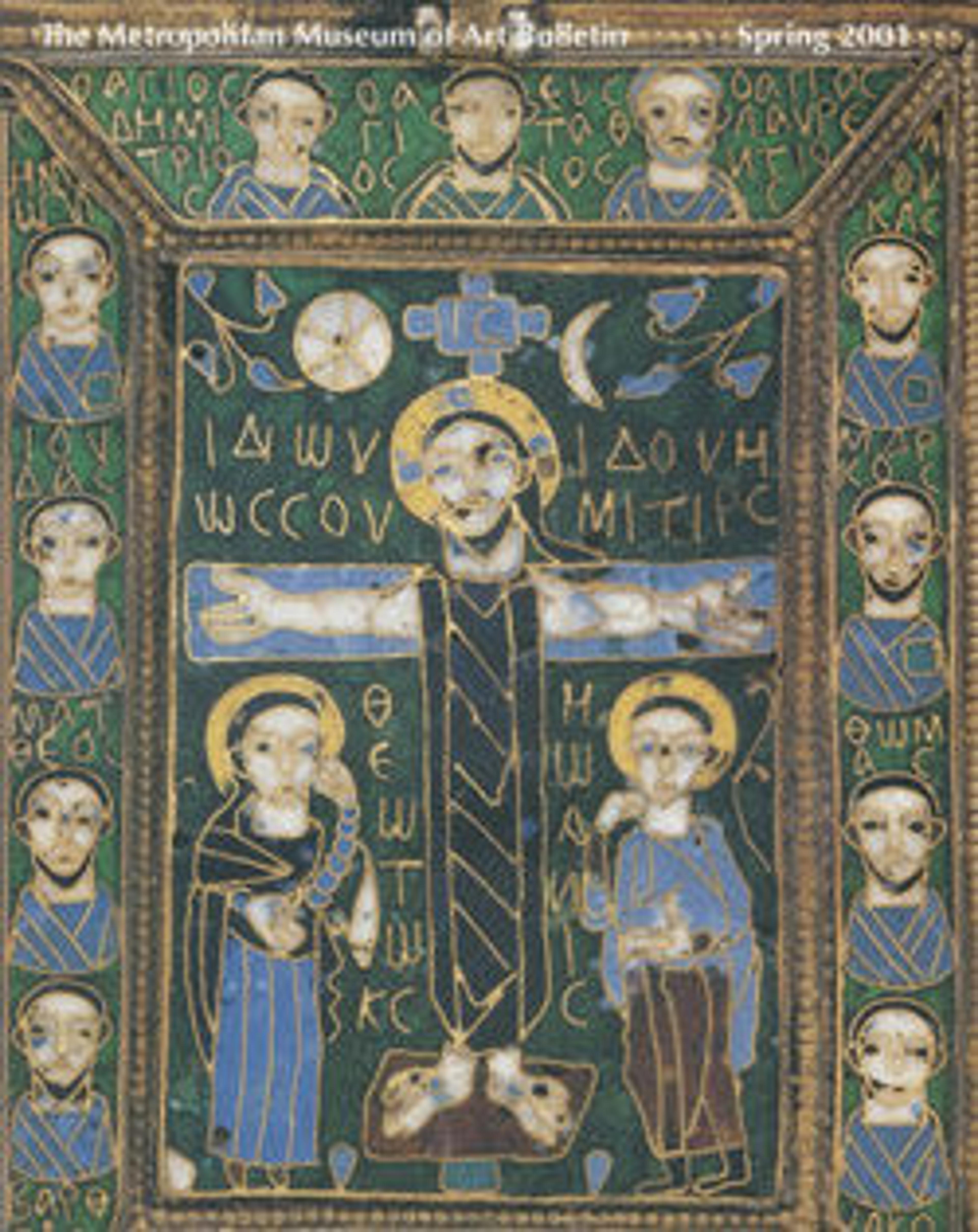One of a Pair of Temple Pendants, with Confronted Birds (front) and Human Heads (back)
When Kievan Rus, a powerful new state to the north of the Byzantine Empire, accepted Christianity as its official religion in 988, the aristocracy also adopted the manners and dress of the Byzantine court. Local artists soon produced their own versions of Constatinopolitan fashions. This temple pendant of precious metals worked in cloisonné enamel or niello are local variants of the more intricately detailed works made for the Byzantine court.
As in Byzantium, temple pendants may have been worn next to the face by both the men and the women of Rus. The works shown here were perhaps buried by their owners when the Mongol armies under Batu Khan sacked Kiev in 1240.
As in Byzantium, temple pendants may have been worn next to the face by both the men and the women of Rus. The works shown here were perhaps buried by their owners when the Mongol armies under Batu Khan sacked Kiev in 1240.
Artwork Details
- Title:One of a Pair of Temple Pendants, with Confronted Birds (front) and Human Heads (back)
- Date:11th–12th century
- Geography:Made in Kyiv, Ukraine
- Culture:Kyivan Rus’
- Medium:Cloissonné enamels, electrum, pearls
- Dimensions:Overall: 1 1/2 x 1 5/8 x 7/16 in. (3.8 x 4.1 x 1.1 cm)
- Classification:Enamels-Cloisonné
- Credit Line:Gift of J. Pierpont Morgan, 1917
- Object Number:17.190.704
- Curatorial Department: Medieval Art and The Cloisters
More Artwork
Research Resources
The Met provides unparalleled resources for research and welcomes an international community of students and scholars. The Met's Open Access API is where creators and researchers can connect to the The Met collection. Open Access data and public domain images are available for unrestricted commercial and noncommercial use without permission or fee.
To request images under copyright and other restrictions, please use this Image Request form.
Feedback
We continue to research and examine historical and cultural context for objects in The Met collection. If you have comments or questions about this object record, please contact us using the form below. The Museum looks forward to receiving your comments.
